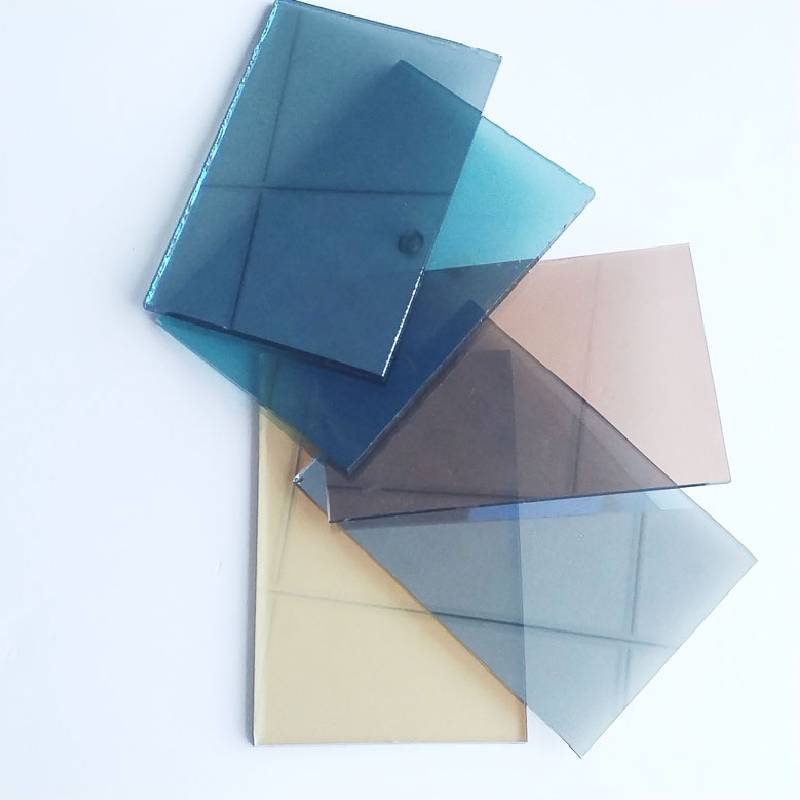The Aluminum Mirror Coating Process A Comprehensive Overview
Aluminum mirror coatings are widely used in various applications, including automotive, aerospace, telecommunications, and optics, due to their excellent reflectivity and cost-effectiveness. The process of applying an aluminum coating to glass or other substrates entails several critical steps that ensure a high-quality reflective surface. This article provides an in-depth look at the aluminum mirror coating process, emphasizing its significance and the technologies involved.
Step 1 Surface Preparation
The first and foremost step in the aluminum mirror coating process is surface preparation. The substrate, typically glass, must be meticulously cleaned to eliminate dust, oils, and other contaminants that could affect adhesion and reflectivity. Common cleaning techniques include chemical solutions, ultrasonic cleaning, or plasma cleaning, depending on the level of cleanliness required. Inadequate preparation can lead to poor adhesion of the coating and reduced overall performance of the mirror.
Step 2 Vacuum Deposition
Once the substrate is clean and dry, the vacuum deposition process begins. This technique is commonly used to apply aluminum coatings to ensure uniform thickness and high quality. There are primarily two methods of vacuum deposition thermal evaporation and sputtering.
1. Thermal Evaporation In this method, aluminum is heated in a vacuum chamber until it vaporizes. The vapor then condenses on the cooler substrate, forming a reflective layer. Thermal evaporation is known for its ability to create smooth films and is often used for higher-quality optical applications.
2. Sputtering This technique involves bombarding a target of aluminum with ions, causing the aluminum atoms to be ejected and deposited on the substrate. Sputtering allows for better control over the coating properties and can produce films with tailored characteristics.
Both methods offer distinct advantages, and the choice between them often depends on the specific requirements of the application, such as coat thickness, adherence, and surface smoothness.
aluminum mirror coating process
Step 3 Coating Thickness Control
Achieving the desired thickness of the aluminum layer is critical as it directly influences the mirror's reflectivity and durability. Engineers utilize various measurement techniques, such as quartz crystal microbalances or optical monitoring systems, to precisely control the thickness during the deposition. A typical aluminum layer ranges from 100 to 300 nanometers, with thicker coatings providing improved reflectivity but potentially increasing the risk of cracking under stress.
Step 4 Protective Coating Application
After the aluminum layer has been deposited, a protective coating is often applied to enhance durability and resistance to environmental factors such as moisture and mechanical abrasion. This step may involve the application of a dielectric layer or a polymer coating. A dielectric layer can improve reflectivity and reduce the likelihood of oxidation, while polymer coatings can provide a barrier against scratches and other physical damage.
Step 5 Quality Control and Testing
The final step of the aluminum mirror coating process is extensive quality control and testing. This phase ensures that the mirrors meet the required specifications for reflectivity, uniformity, and hardness. Techniques such as spectrophotometry are used to measure the reflectivity across different wavelengths, while physical tests assess the adhesion strength of the coating. Meeting these standards is crucial for ensuring the mirrors perform optimally in their intended applications.
Conclusion
The aluminum mirror coating process is a sophisticated blend of technology, precision, and science. From surface preparation to the application of protective coatings, each step is vital in creating high-quality aluminum mirrors that reflect well and withstand the rigors of various environments. As industries continue to demand more efficient and effective reflective solutions, advancements in coating technologies will likely drive innovation in the materials used, ultimately enhancing performance across a wide array of applications.
 Afrikaans
Afrikaans  Albanian
Albanian  Amharic
Amharic  Arabic
Arabic  Armenian
Armenian  Azerbaijani
Azerbaijani  Basque
Basque  Belarusian
Belarusian  Bengali
Bengali  Bosnian
Bosnian  Bulgarian
Bulgarian  Catalan
Catalan  Cebuano
Cebuano  Corsican
Corsican  Croatian
Croatian  Czech
Czech  Danish
Danish  Dutch
Dutch  English
English  Esperanto
Esperanto  Estonian
Estonian  Finnish
Finnish  French
French  Frisian
Frisian  Galician
Galician  Georgian
Georgian  German
German  Greek
Greek  Gujarati
Gujarati  Haitian Creole
Haitian Creole  hausa
hausa  hawaiian
hawaiian  Hebrew
Hebrew  Hindi
Hindi  Miao
Miao  Hungarian
Hungarian  Icelandic
Icelandic  igbo
igbo  Indonesian
Indonesian  irish
irish  Italian
Italian  Japanese
Japanese  Javanese
Javanese  Kannada
Kannada  kazakh
kazakh  Khmer
Khmer  Rwandese
Rwandese  Korean
Korean  Kurdish
Kurdish  Kyrgyz
Kyrgyz  Lao
Lao  Latin
Latin  Latvian
Latvian  Lithuanian
Lithuanian  Luxembourgish
Luxembourgish  Macedonian
Macedonian  Malgashi
Malgashi  Malay
Malay  Malayalam
Malayalam  Maltese
Maltese  Maori
Maori  Marathi
Marathi  Mongolian
Mongolian  Myanmar
Myanmar  Nepali
Nepali  Norwegian
Norwegian  Norwegian
Norwegian  Occitan
Occitan  Pashto
Pashto  Persian
Persian  Polish
Polish  Portuguese
Portuguese  Punjabi
Punjabi  Romanian
Romanian  Russian
Russian  Samoan
Samoan  Scottish Gaelic
Scottish Gaelic  Serbian
Serbian  Sesotho
Sesotho  Shona
Shona  Sindhi
Sindhi  Sinhala
Sinhala  Slovak
Slovak  Slovenian
Slovenian  Somali
Somali  Spanish
Spanish  Sundanese
Sundanese  Swahili
Swahili  Swedish
Swedish  Tagalog
Tagalog  Tajik
Tajik  Tamil
Tamil  Tatar
Tatar  Telugu
Telugu  Thai
Thai  Turkish
Turkish  Turkmen
Turkmen  Ukrainian
Ukrainian  Urdu
Urdu  Uighur
Uighur  Uzbek
Uzbek  Vietnamese
Vietnamese  Welsh
Welsh  Bantu
Bantu  Yiddish
Yiddish  Yoruba
Yoruba  Zulu
Zulu 

